The Torn Series
It’s the prerogative of the artist to tell a story. Whether it is a moment in the blooming of a flower, the smile of a woman, or the tragedy that plays out during our lifetimes. We try to reflect what we see, what we feel, and what we want our viewers to experience. The still unfolding trauma of the Indian Residential Schools in north America, reminds one of the experience of being removed from everything you know about life, the people we love and the promise life holds for all. It is what I would call being torn apart. Torn from everything. Mother, father, brothers, sisters, friends and animals. Everything lost to the child. Torn. We need to think.
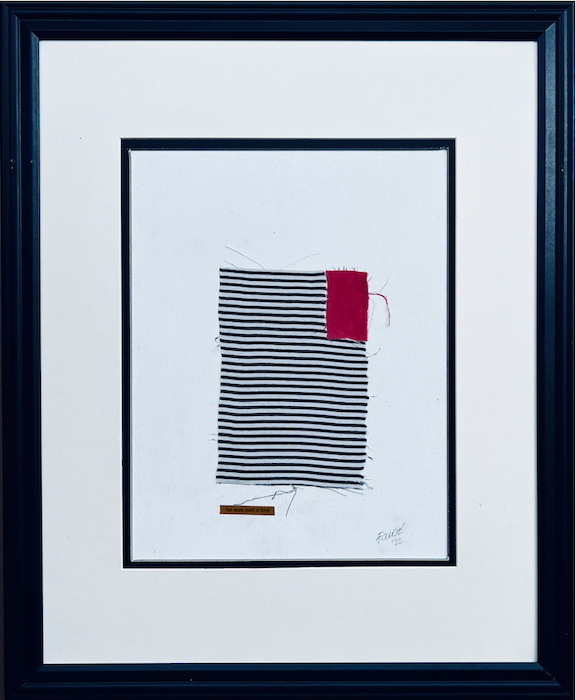
"He was just a boy"
*”When I began this research, I had hoped to write about Thomas Moore. I quickly found, however, that finding out what happened to young Thomas Moore was more difficult than I had thought it would be. The boy was a Protestant and had previously attended Lakes End School (Regina Indian Industrial School). His state of education upon admission consisted of knowing the alphabet. His height was 3 feet, 11 inches and he weighed 54 1/2 pounds. The height and weight information strikes me as particularly sad. He was just a boy, 3 feet 11 inches and 54 1/2 pounds”.
Source and acknowledgement:
*Naomi Angel https://tracingmemory.wordpress.com/tag/thomas-moore/
Phillippus Fourié Torn Series, #1 “he was just a boy” 9.75” X 12.75” – torn textiles and cold wax collage on re-purposed wood panel. Framed.
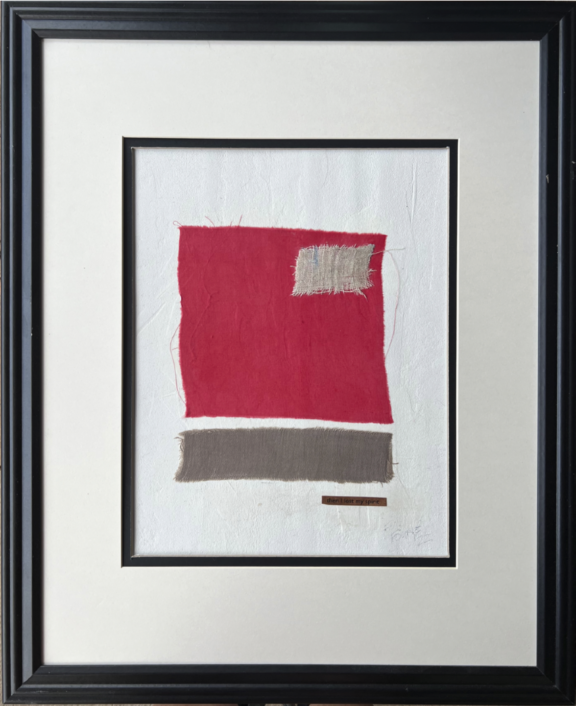
"then I lost my spirit"
In 1884, Christian missionaries came to South Dakota’s Yankton Reservation and took eight-year-old Zitkála-Šá from her mother. “I remember being dragged out, though I resisted by kicking and scratching wildly,” Zitkála-Šá wrote in 1900 of her hair cutting. “In spite of myself, I was carried downstairs and tied fast in a chair. I cried aloud, shaking my head all the while until I felt the cold blades of the scissors against my neck, and heard them gnaw off one of my thick braids. Then I lost my spirit … now I was only one of many little animals driven by a herder. Our mothers had taught us that only unskilled warriors who were captured had their hair shingled by the enemy. Among our people, short hair was worn by mourners, and shingled hair by cowards!”
Source and acknowledgement:
https://ictnews.org/news/lakota-people-sense-centuries-of-repression
Torn Series, #2 “then I lost my spirit” 9.75” X 12.75” – torn textiles and cold wax collage on re-purposed wood panel. Framed.
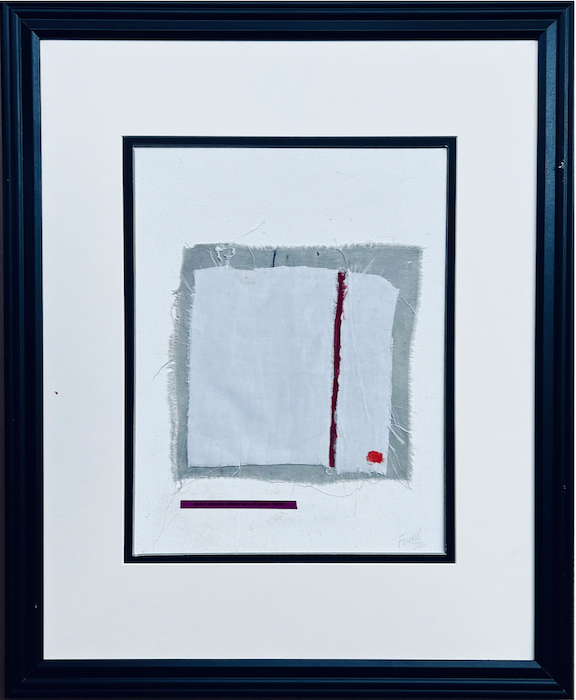
"do not answer when we call your name"
Josée Dupuis · CBC News · Posted: Oct 27, 2016 5:15 AM EDT | Last Updated: October 27, 2016Marie-Jeanne Papatie remembers seeing her older brothers and sisters leave the First Nations reserve of Lac-Simon to attend residential school Saint-Marc-de-Figuery, near Amos in the Abitibi region in northwestern Quebec. The next summer, she recalls her father hearing about stories of abuse that took place at the institution. In shock, he decided he would not send his youngest daughter there. He came up with a plan to hide five-year-old Marie-Jeanne. Her father made her sleep on a makeshift mattress in the basement of their family home. Through the window, she could see the street and the school bus picking up children. Papatie said she still remembers her father’s words: “Do not answer when we call your name”
Source and acknowledgement:
Josée Dupuis · CBC News · Posted: Oct 27, 2016 5:15 AM EDT | Last Updated: October 27, 2016
Torn Series #3 “do not answer when we call your name” 9.75” X 12.75” – torn textiles and cold wax collage on re-purposed wood panel. Framed.
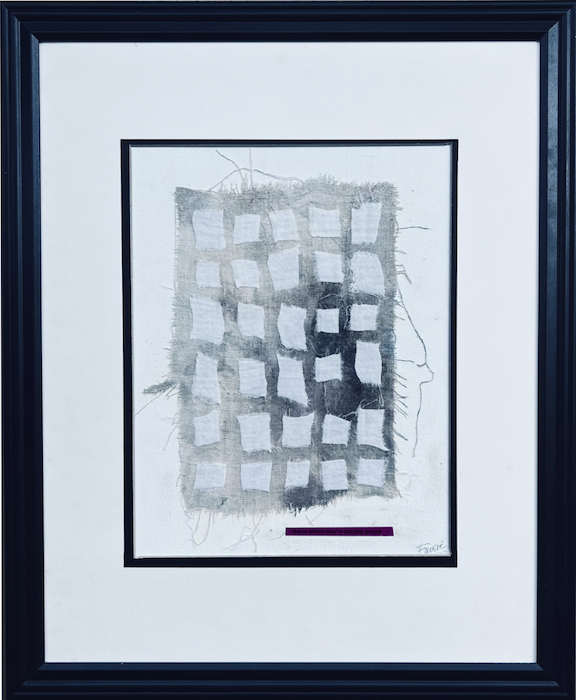
“That’s where they’re burying people”
They would talk about it in whispers. In the middle of the night. About Brother Joseph’s apple orchard. Harvey McLeod attended the Kamloops Indian Residential School from 1966 to 1968. Now chief of the Upper Nicola Band in the southern Interior of B.C., the 67-year-old remembers the hushed conversations he heard in the boys’ dorm about the orchard beside the school. “We’re going to go steal apples, and then one night, one of the guys says no, we shouldn’t. That’s where they’re burying people.”
Source and acknowledgement:
https://www.cbc.ca/newsinteractives/features/down-in-the-apple-orchard
By Lynette Fortune, Linda Guerriero and Gillian Findlay Jan. 13, 2022
Torn Series #4 “That’s where they’re burying people” 9.75” X 12.75” – torn textiles and cold wax collage on re-purposed wood panel. Framed.
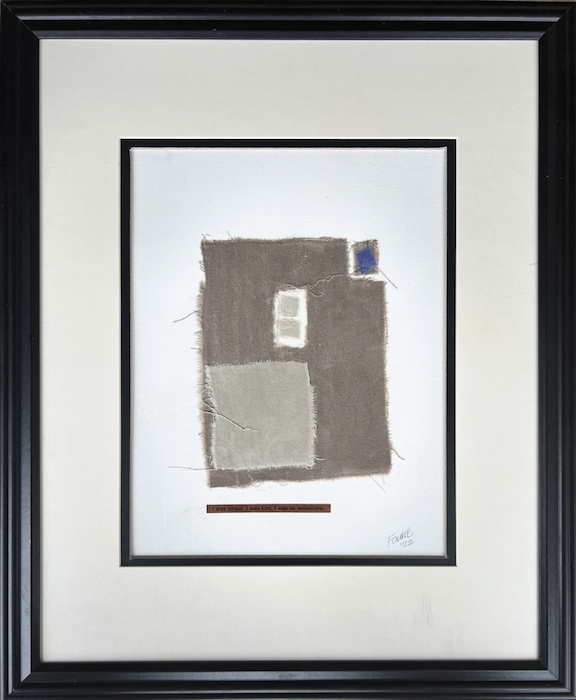
“I was afraid. I was lost. I was so lonesome.”
The first shock was being forced to leave home. Garnet Angeconeb is an Anishinaabe elder from the Lac Seul First Nation in Northern Ontario and a survivor of the Pelican Lake Indian Residential School. He writes: “I was ripped away from my loving family .. I was afraid. I was lost. I was so lonesome. I felt betrayed. I felt abandoned.”
Source and acknowledgement:
*Naomi Angel https://tracingmemory.wordpress.com/tag/thomas-moore/
Torn Series #5 “I was afraid. I was lost. I was so lonesome” 9.75” X 12.75” – torn textiles and cold wax collage on re-purposed wood panel. Framed.
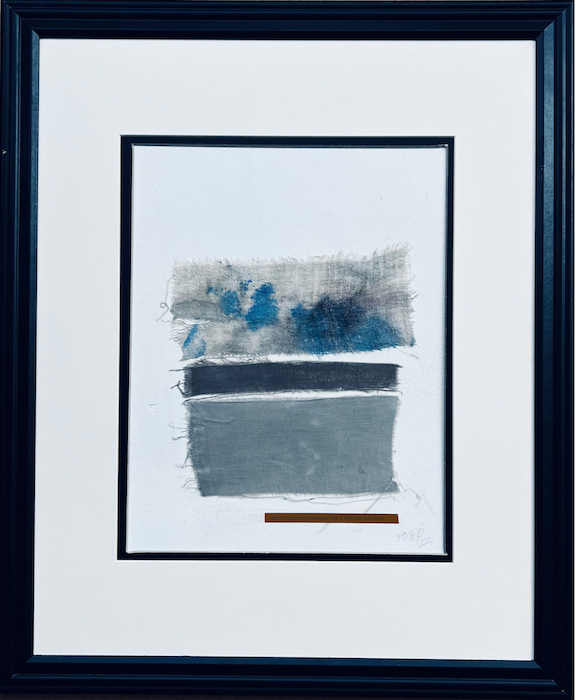
“don’t forget my brother, he’s still buried there
At the center of the stories were the children who never came home from the Carlisle Indian Industrial School in Pennsylvania, where Yufna Soldier Wolf’s grandfather was a student. “My grandpa used to say, ‘Don’t forget these children’. Don’t forget my brother – he’s still buried there”, Soldier Wolf said. She promised that she would remember.
Source and acknowledgement:
Torn Series #6 “Don’t forget my brother, he’s still buried there” 9.75” X 12.75” – torn textiles and cold wax collage on re-purposed wood panel. Framed.
